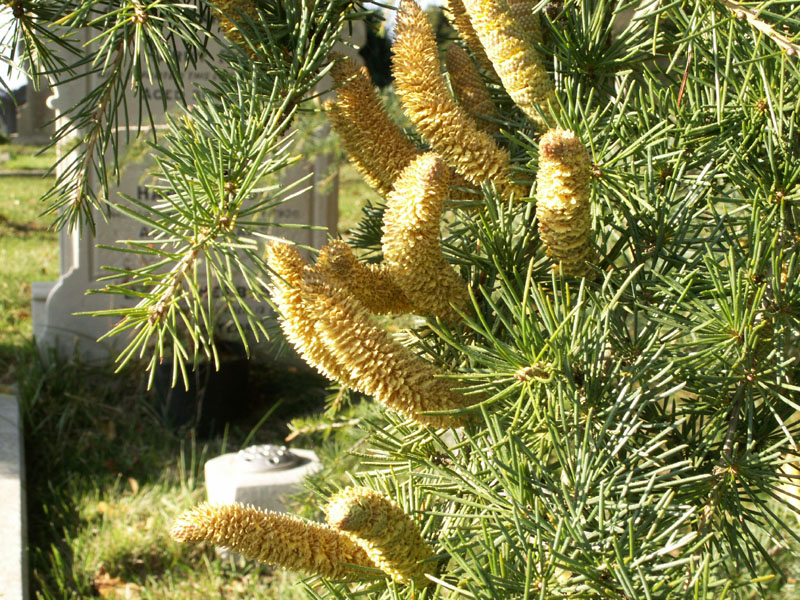November 2007 – Deodar Cedar (Cedrus deodara) in Flower
Cedar flowers
It’s November and the large, majestic Deodar Cedar tree in the Cemetery is in flower. From a distance the yellow flowers look like small upright candles fixed to the branches giving an impression of a decorated Christmas tree. The flowers are monoecious (individual flowers are either male or female, but both sexes can be found on the same plant) and are pollinated by the wind. If you brush up against the low branches of the tree the yellow (male) flowers release clouds of pollen.
Small male cones are formed on the lower branches of trees, whilst the larger female cones are formed on higher branches. These female cones persist on the tree for 2 – 3 years before breaking up.
The ornamental conifer Cedrus deodara “Deodar Cedar” (also known as the “Himalyan Cedar”) was first introduced to British parks and gardens from its native home in the Western Himalayas in 1831. The tree in Ryde Cemetery was probably introduced as part of the original planting when the first extension of the Cemetery was made in the 1860s.
Deodar Cedar in Flower 3 November 2007
Note: this is a correction to the previous entry where I incorrectly identified the tree as a Cedar of Lebanon. Sorry!
Janette Gregson.


